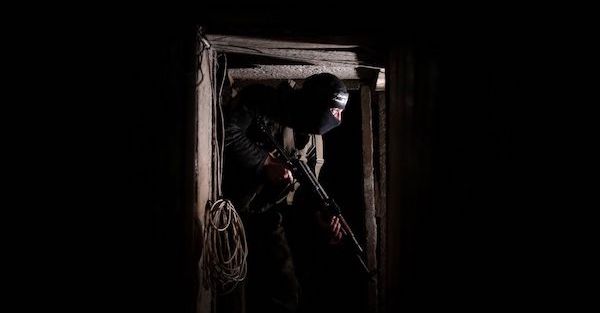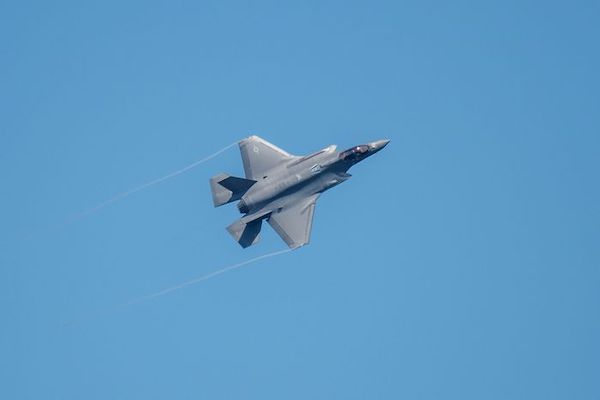Within weeks after the disappearance of MH370, many theories had been proposed, but one in particular had come to the fore: that one of the pilots had seized control of the plane and flown it on a prolonged and sophisticated murder-suicide mission into the southern Indian Ocean. While there have been a handful of known cases where pilots have flown their own plane into the ground, no one had ever before carried out a sophisticated, complicated, and aggressive plan to abscond with an airplane only to spend seven hours patiently waiting to die. But there seemed no other way to easily explain the sequence of events that emerged from the Inmarsat data. What would such a person be like, psychologically? What kind of traces would they leave behind in their social media, in their personal photographs and work records, and in the memories of those who knew them? In today’s episode we turn our attention to Captain Zaharie Ahmad Shah and First Officer Fariq Abdul Hamid and take stock of the evidence.
Continue reading Deep Dive: MH370 Episode 9: The PilotDeep Dive: MH370 Episode 8: Surface Search
From the first day MH370 went missing, it was the subject of an intense surface search. Planes, ships and satellites scoured millions of square kilometers of ocean. Not a single piece was ever spotted. In today’s episode we talk about how it went down, and what we might conclude from it. We also touch on a strange coda to the search, that involved an attempt to find the plane by listening for audible pings from the plane’s black boxes.
As we’ve previously discussed, at first everyone thought that the plane had crashed in the South China sea, under its original route to Beijing. At first this was a Search and Rescue mission, as authorities hoped that the plane might have ditched à la Miracle in the Hudson and some survivors could be rescued. But as time went by hope quickly faded.
Continue reading Deep Dive: MH370 Episode 8: Surface SearchNew York: The Tunnel War
After her release from two weeks of Hamas captivity, 85-year-old Yochaved Lifshitz described being marched for several kilometers underground by her captors through “a giant system of tunnels, like spiderwebs.” Few other Israelis had seen the Gaza Strip’s storied tunnel complex, but many are now going to get the chance.
Israeli Defense Forces that pressed several miles into Gaza beginning last Friday are forced to contend with a sophisticated labyrinth of underground tunnels and bunkers constructed over several decades by Hamas, hiding fighters, weapons, and more than 200 Israeli hostages. The elaborate system is believed to extend for hundreds of miles and, in some locations, lies several hundred feet below ground. Military experts who have studied Hamas call the tunnels a formidable defensive system that would be incredibly costly for Israeli troops to neutralize, even after several weeks of heavy bombardment targeting the network.
Continue reading New York: The Tunnel WarDeep Dive: MH370 Episode 7: Frequency
On March 24, 2014, the Malaysian Prime minister made a shocking announcement: using a new kind of mathematical analysis, scientists at the British satellite communications company Inmarsat had determined conclusively that MH370 had flown into a remote area of the southern Indian Ocean. Because there are no islands in the area, there was no possibility that anyone on the plane could have survived. Therefore, all 239 passengers and crew must be dead. It was a stunningly sweeping conclusion to reach based entirely on a kind of mathematics that no one in the outside world knew the details of. But was it correct?
Up until that time it had seemed to me that the plane more likely went north. It seemed implausible that someone sophisticated and motivated enough to steal a plane so aggressively would do it just to die a protracted death. In fact I’d written twoarticles for Slate making that case. At the time, most people already thought the plane probably went south, so my editor had only let me write the articles after I’d promised that I would write an apology article if I turned out to be wrong. I thought it was worth it, so I said yes.
Continue reading Deep Dive: MH370 Episode 7: FrequencyNew York: How Long Can Gaza Survive Without Water?
On Wednesday, President Biden announced Israel would not block some humanitarian aid from entering the Gaza Strip via Egypt, partially reversing a two-week-old ban put into place after the Hamas attack on October 7. Human-rights experts said the food, medicine, and water will do little to mitigate the looming humanitarian disaster. The most acute form of deprivation is safe drinking water, which threatens the lives of over 2 million people.
That’s because the infrastructure to distribute water was in a critical state even before the current crisis. The decades-long conflict between Israel and Hamas has denied the Gaza Strip of the resources to invest in a robust water system. “The baseline was already quite limited,” says Omar Shakir, Israel and Palestine director at Human Rights Watch. “So that even a step that might have been significant in the pre-October 7 context is going to be even more limited in terms of how much it helps the population.”
Continue reading New York: How Long Can Gaza Survive Without Water?New York: Why NASA Wants Your UFO Videos
Last year, as the topic of UFOs was exploding back into the mainstream, NASA convened a panel of outside experts, the UAP Independent Study Team, to assess the unclassified evidence the government had collected. (UAP, for “Unidentified Anomalous Phenomena,” is the government-approved euphemism for UFO.) The group was a science-nerd murderers’ row whose purpose was to help the space agency handle a subject that had long attracted conspiracy theories — but which was also grounds for legitimate questions, considering the unexplained objects people had been observing and recording with increasing frequency. Heading the 17-member panel was Dr. David Spergel, a longtime Princeton professor of astrophysics who in 2021 took over as president of the Simons Foundation, a $5 billion nonprofit that supports basic science research. The group held a public meeting to discuss its work in May and released its final report last month. Among its top-line findings was that it had found no evidence of extraterrestrial UFOs, but that more data would be needed to settle the matter conclusively — including data from civilians who capture unidentified phenomena. It was a circumspect conclusion that, predictably, did little to satisfy true believers on either side of the UAP divide.
Intelligencer spoke with Spergel at his office at the Simons Foundation’s building near Madison Square, where he discussed why NASA got involved in the hunt for UFOs, what the odds of finding aliens are, and whether David Duchovny really believes that the truth is out there.
Why did NASA want to get involved in UFOs?
This starts with the Navy starting to declassify a bunch of images. The most famous one is the “Tic Tac” [filmed by a U.S. Navy fighter off the coast of San Diego], which is about 20 years old now. You look at those incidents and you say, “There’s something weird going on we don’t understand.” Then, having delved into the incident a bit, you realize that you wish they collected better data. What we’re left with is hard to interpret. NASA is a scientific agency. It’s charged with investigating the unknown. And the head of NASA announced, “We’re going to weigh in on this.”
After looking at evidence declassified by the Pentagon’s UAP organization, AARO (“All-domain Anomaly Resolution Office”), the panel concluded that most reported UAPs were either balloons, drones, or airplanes. What does that tell you?
The number of drones that are up at any given moment is enormous — they’re just monitoring fires and gas pipelines and helping farmers monitor crops. There’s also a ton of balloons. It turns out that small amateur balloons below a certain size didn’t have to be reported to the FAA. There’s probably some regulatory cleanup needed to make sure that balloons at low altitudes are not a threat to pilots.
Behind the Scenes on “Deep Dive: MH370”
It’s been a lot of fun working with the multi-talented Andy Tarnoff putting together our new podcast “Deep Dive: MH370,” which breaks down step by step the technical clues behind aviation’s greatest mystery. Here’s a peek behind the scenes:
Deep Dive: MH370
I’m pleased to announce that I’ve launched a podcast to delve into the evidence underpinning the greatest (and, I’d argue, most important) aviation mystery of all time. Andy Tarnoff and I are steadily working through the disappearance, deciphering what happened step-by-step. We’re currently on our third episode, which is the first to be both a video and an audio podcast. You can find all the episodes on our show page.
New York: F35 Fighters Are Supposed to Disappear — Just Not Like This
The U.S. Marine Corps suffered a major embarrassment yesterday when one of the $75 million top-of-the-line fighters, designed to be virtually undetectable to enemy radar, kept flying after its pilot punched out during a “mishap” Sunday afternoon. Evidently whatever had gone wrong wasn’t as bad as the pilot had feared, because the plane kept on flying on autopilot for several more hours — but to where, exactly, the Marines didn’t know, the F-35’s stealth capabilities in this context being a positive hindrance. Search planes flew grid patterns over South Carolina Monday as Joint Base Charleston put out an appeal to the public asking for “any information that may help our recovery teams.” Eventually, the wreckage was located Monday evening in a wooded area about 80 miles north of the base.
This was not the first time an F35 has been lost, in either sense of the word. In 2019, a Japanese F-35 vanished off the coast of Honshu during a training flight; pieces of debris and the pilot’s body were located, but the plane itself was never found. Last January, a U.S. Navy F-35 slid off the deck of the aircraft carrier USS Carl Vinson after a botched landing and sank to the bottom. A month later it was successfully recovered from a depth of 12,400 feet. In 2018, the U.S. grounded the entire fleet after an earlier crash in South Carolina. All told, at least half a dozen F-35s have been destroyed in various mishaps, with others severely damaged but repairable.
[Here’s video of a pilot ejecting from an F35 at low altitude shortly before it crashed in Forth Worth, Texas last December]
Continue reading New York: F35 Fighters Are Supposed to Disappear — Just Not Like ThisNew York: In Russia, No One Is Safe in the Air
The apparent downing of the business jet carrying Wagner chief Evgeniy Prigozhin delivered a suitably brutal end to one of Putin’s most ruthless and effective deputies. It also underlined the extent to which Russia has been willing to set aside the niceties of aviation safety in the raw exercise of power.
Throughout the rest of the world, civil aviation is sacrosanct, a highly protected and regulated industry bound by international treaties enforced by powerful agencies like the Federal Aviation Administration in the United States and the European Union Aviation Safety Agency in the EU. Passenger safety is paramount. As a result, fatal accidents are exceedingly rare: The United State hasn’t had a fatal crash since 2009.
In 1978, the Soviet Union shot down an off-course Korean Air Lines 707, forcing it to crash-land on a frozen lake with the loss of two of the passengers and crew. Five years later, it shot down another off-course Korean Air Lines airliner over the Sea of Japan, killing all 269 aboard. In both cases, Soviet officials claimed that they were acting in self-defense, yet in both fighter jets had approached close enough to their targets to see that they were civilian airliners.
After the fall of the Soviet Union, its successor state, the Russian Federation, modernized its civilian aircraft fleet, and for a time safety improved. But after former KGB agent Vladimir Putin came to power in 1999, the Kremlin gradually returned to its old ways. In 2014, as a Russia-backed insurgency raged in the eastern part of Ukraine, a regular Russian army anti-aircraft unit shot down a Malaysian Airlines 777 en route from the Netherlands to Malaysia as it neared the border between Ukraine and Russia. All 298 passengers and crew were killed. To this day, it remains unclear why the plane was shot down, but in the aftermath Ukraine halted its air-force attacks on Russian ground units and its counteroffensive against the invaders stalled.
Continue reading New York: In Russia, No One Is Safe in the Air



